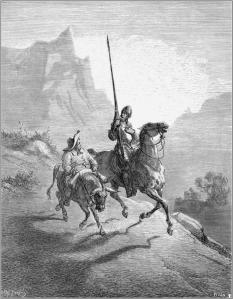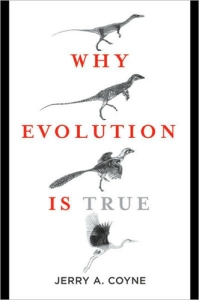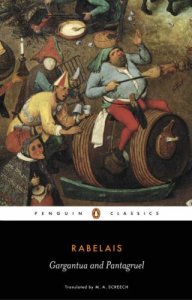 People in general don’t read classic literature. If you ever pick up a book it will most likely be a pulp fiction. After a long day’s work who has the energy to read anything substantial? You’re not going to tire yourself even more by reading long, tedious, nonsensical passages by obscure writers from the 19th century. So you think. How wrong can one be? Long, granted. Tedious, occasionally. Nonsensical, not a single one of them. In no way were authors of former times stupid. In actual fact, reading classic literature can be life changing. How come? Why bother to read something that was written hundreds of years ago? What relevance can it bear on my everyday struggle, also known as life? The reason is that these books teach you the meaning of being human. They teach you the way to interact with fellow humans. The epic poems of Homer, the Iliad and the Odyssey, contained everything there is to know about the human nature and heart as early as 2,800 years ago.
People in general don’t read classic literature. If you ever pick up a book it will most likely be a pulp fiction. After a long day’s work who has the energy to read anything substantial? You’re not going to tire yourself even more by reading long, tedious, nonsensical passages by obscure writers from the 19th century. So you think. How wrong can one be? Long, granted. Tedious, occasionally. Nonsensical, not a single one of them. In no way were authors of former times stupid. In actual fact, reading classic literature can be life changing. How come? Why bother to read something that was written hundreds of years ago? What relevance can it bear on my everyday struggle, also known as life? The reason is that these books teach you the meaning of being human. They teach you the way to interact with fellow humans. The epic poems of Homer, the Iliad and the Odyssey, contained everything there is to know about the human nature and heart as early as 2,800 years ago.
Enter Don Quixote.
Here’s a book that is more talked about than read nowadays. It’s really unfair, to say the least. Written by Don Miguel de Cervantes Saavedra exactly 400 years ago in two parts, it is not uncommonly ranked among the greatest novels of all time. That sounds strong, eh? There must be good reason for such a strong claim, right? There is.
I’m not trying to write another review here. Literature scholars have done that countless times and will be doing so in the future. Having said that, allow me a couple of remarks that have been concocted by the neurons in my cerebral cortex about this timeless classic.
Don Quixote is not just one of the greatest novels, it is also considered one of the earliest in the western world. This is the greatest adventure story I’ve ever read, which is supremely humorous at the same time. No doubt a bit long-winded (the version I read is 760 pages long), but well worth the effort. The Don, having read all the available books of chivalry, proclaims himself a knight-errant, whose only purpose in life is to serve those who he deems to be in need of his knightly service. He is an extremely likeable figure. Wise and knowledgeable in matters of worldly affairs and human nature, but very naïve and credulous at the same time. In effect, he requires to be offset, or buffered, if you will, by his loyal squire, Sancho Pança, who is an ignorant countryman, but very down-to-earth. Together they get into countless comic situations, often ending up severely battered, but somehow they invariably manage to keep their good cheer. Proper English translations do not diminish the eloquence of the protagonist, which is unparalleled in all literature. Take a look at the famous windmill scene, for instance:
‘Fortune,’ cried he, ‘directs our affairs better than we ourselves could have wished: look yonder, friend Sancho, there are at least thirty outrageous giants, whom I intend to encounter; and, having deprived them of life, we will begin to enrich ourselves with their spoils: for they are lawful prize; and the extirpation of that cursed brood will be an acceptable service to Heaven.’ ‘What giants?’ quoth Sancho Pança. ‘Those whom thou seest yonder,’ answered Don Quixote, ‘with their long extended arms; some of that detested race have arms of so immense a size, that sometimes they reach two leagues in length.’ ‘Pray, look better, sir,’ quoth Sancho; ‘those things yonder are no giants, but windmills, and the arms you fancy, are their sails, which, being whirled about by the wind, make the mill go.’ ‘It is a sign,’ cried Don Quixote, ‘thou art but little acquainted with adventures. I tell thee they are giants; and therefore, if thou art afraid, go aside and say thy prayers, for I am resolved to engage in a dreadful, unequal combat against them all.’
Not many works of literature can boast phrases that most people recognize immediately. The adjective quixotic, for example, bears the following definition in the dictionary on my laptop: “exceedingly idealistic; unrealistic and impractical”. Also, it’s not too hard to deduce from the above passage the origin of the phrase tilting at windmills.
This tome was my everyday companion for more than two months (I’m a slow reader). I felt a slight sadness upon turning the last page, but also a good deal of contentment at the same time. People are afraid of touching serious, thick books such as this one, but once you manage to surmount your (unwarranted) prejudice, you’d be surprised how quickly and completely it absorbs you.
I reckon I’d best stop besmirching this great work by my rather sloppy and incoherent writing and better wind up with what Clifton Fadiman (a more competent critic than I am) has to say about Don Quixote:
Is this book a burlesque of chivalry? Or is it the most persuasive of pleas for the chivalric attitude, apart from any specific time or institution? Is it a satire on dreamers? Or is it a defense of dreaming? Is it a symbol of the tragic soul and history of Spain? If so, why does it speak so clearly to men of all nations and races? Is it the author’s spiritual autobiography? A study of insanity? Or of a higher sanity? Or is it a dramatized treatise on illusion and reality? Finally, is Don Quixote a kind of actor, who chooses his role because by so doing he can absorb life and reflect on it in a way denied to the single, unvarying personality?
I leave you to the golden book that Macauley thought “the best novel in the world, beyond comparison.”
It is easily one of my all-time favourite books.
 Jerry A. Coyne from the University of Chicago is a distinguished biologist of
Jerry A. Coyne from the University of Chicago is a distinguished biologist of 

